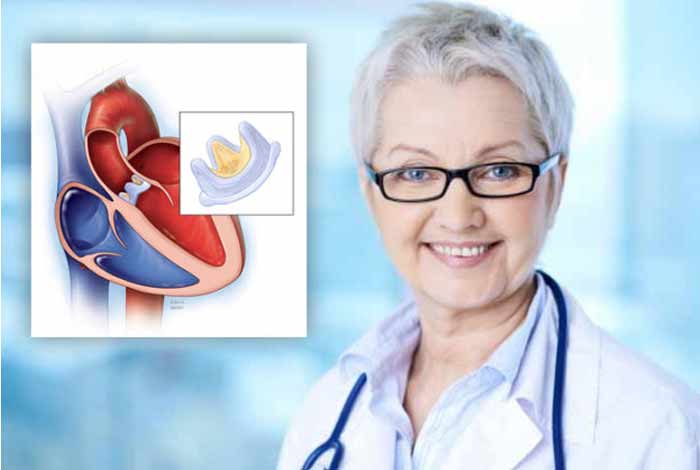
Overview and Facts
Coronary artery disease, also known as coronary heart disease or ischemic heart disease (ischemia), is a heart condition caused when the major blood vessels that supply oxygenated blood and nutrition to the heart i.e. coronary arteries, get blocked, diseased, or damaged. Arteries generally get narrowed up or blocked because of the deposition of cholesterol or other harmful substances called plaque.
The partial or complete blockage of arteries is known as atherosclerosis. Too much plaque deposition in arteries limits the flow of blood to the heart muscles, causing symptoms, such as chest pain (angina), irregular heart beats (arrhythmia), breathing problems and in severe cases, the coronary arteries get completely blocked up, leading to a heart attack.
It is difficult to notice coronary heart disease complications because it takes decades to develop the disease. Most people don’t realize that they are suffering from a coronary artery disease until they suffer from angina or heart attack.
According to the statistics of the U.S Center for Disease Control and Prevention (CDC), coronary heart disease leads to the death of about 370,000 people every year.
Types and Symptoms of Coronary Heart Disease
Types of Coronary Heart Disease:
Coronary artery disease classification is based on the causes of the heart condition. Different types of coronary artery diseases are:
- Obstructive Coronary Artery Disease: This form of coronary artery disease is generally caused by fatty cholesterol deposits known as plaques, which get deposited in the coronary arteries and block the flow of oxygenated blood to the heart causing symptoms, such as angina and breathing problems.
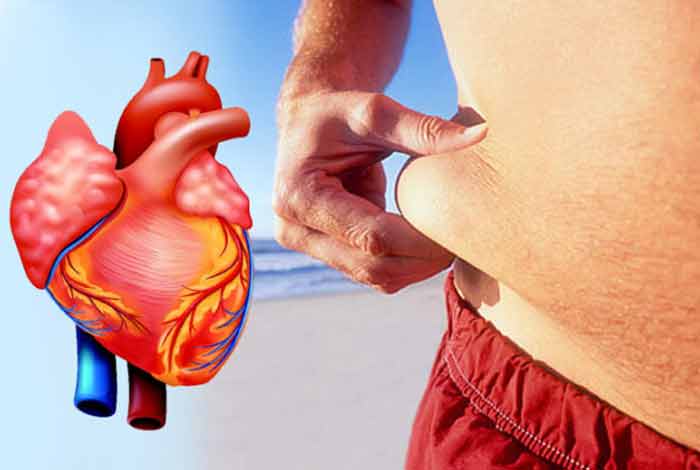
- Non-Obstructive Coronary Artery Disease: This form of coronary artery disease is non-obstructive in nature which means that there is no obstruction to the flow of blood due to the deposition of plaque. Instead, this type of coronary disease is caused due to various other problems associated with structure and functioning of the coronary arteries. These problems include inappropriate constriction of arteries (coronary vasospasm), damaged lining (endothelial dysfunction), malfunctioning of branches (microvascular dysfunction), and malfunctioning of overlying heart muscles that squeeze the arteries (myocardial bridging).
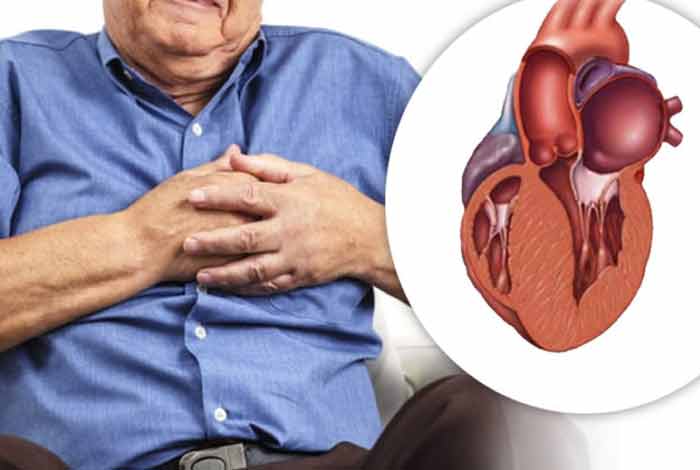
- Spontaneous Coronary Artery Dissection: The spontaneous dissection of coronary arteries can affect the inner layer of the arteries, splitting them apart. This results in the channeling of blood flow in false directions and the compression of the path that carries blood to the heart. This false channeling leads to various complications.
Symptoms of Coronary Heart Disease:
There are no early signs that can help a person realize that he or she is suffering from coronary artery disease. Even when the deposition of cholesterol or plaque is in progress, people don’t realize that their coronary arteries are getting blocked.
However, the symptoms are observed when the blockage is severe and highly affects the flow of blood or completely blocks it. Some of the warning signals of coronary artery diseases are:
a) Chest pain or angina: This condition shows that a person is suffering from coronary atherosclerosis or coronary artery disease. The person feels excessive pressure and compression in his or her chest as if someone is applying external pressure on it. Angina pain generally occurs in the middle portion or the left side of the chest. Sometimes physical, mental, or emotional stress can also trigger angina which gets relieved when the person recovers from the stressful situation.
b) Heart attack: It is one of the severe complications associated with coronary artery disease. Heart attacks are sudden and some of the symptoms of heart attack are:
- Mild pain in chest, or in the other upper parts of the body, such as the back, shoulders, arms, neck, and jaw
- Shortness of breath (dyspnea)
- Irregular heart beat pattern
- Excessive sweating
- Nausea or vomiting
- Dizziness and weakness
When any of these symptoms are observed it can mean something is wrong with functioning of heart and can be an indication of an impending heart attack. A heart attack is a serious emergency and requires immediate medical attention from paramedics.
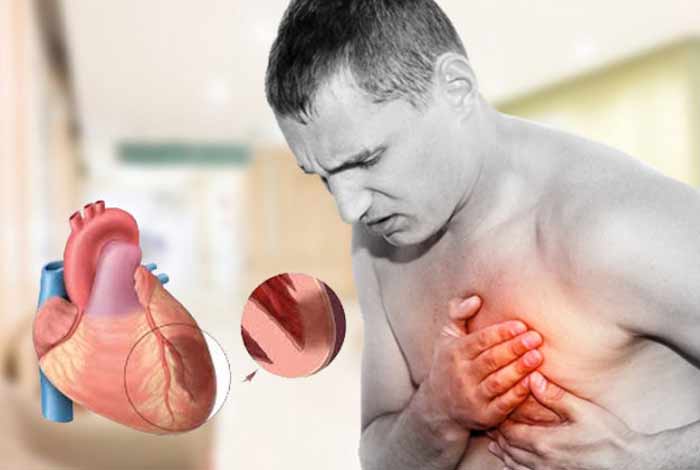
Risk Factors of Coronary Heart Disease
There are various factors that increase the risk of developing coronary artery disease and heart attacks. Some of these are:
- Age: With age, the arteries of a person become narrower or might even get damaged, increasing the risk of coronary heart diseases.
Gender: The risk of heart attacks and coronary artery diseases is generally higher in men as compared to women. However, the risk of the condition increases in women after menopause. - Genetics: There are chances that the disease is inherited from the previous generation. If a family member, such as father, brother, mother, or sister, has suffered a heart attack or have been diagnosed with some other heart diseases, the risk of developing coronary artery disease gradually increases.
- Ethnicity: African Americans, Mexican Americans, Asian Americans, American Indians, and native Hawaiians are at high risk of developing coronary artery disease because of high obesity rates among them.
- Smoking: It increases the risk of coronary artery disease. Passive smokers are at high risk of developing the disease, however, second-hand smokers (people who inhale the smoke caused by passive smokers) are also at high risk of developing the disease.
- High levels of bad blood cholesterol: It increases the risk of deposition of plaque in arteries, which can also affect the coronary arteries, causing coronary atherosclerosis and coronary artery diseases. When the levels of bad cholesterol, i.e. low-density lipoprotein (LDL) are high and the levels of good cholesterol, i.e. high-density lipoprotein (HDL) are low, it indicates that a person is at risk of getting a heart disease.
High blood pressure: It can result in thickening and hardening of arteries, affecting the flow of blood, and raising the risk of coronary heart disease. - Obesity: Being overweight, along with high blood pressure, increases the risk of diabetes (type-2). These conditions also increase the risk of various heart diseases such as coronary heart disease.
- Stress: It can also lead to artery damage and can also increase the risk of heart attack.
Physical inactivity: Not indulging in activities which involve movement of muscles can also lead to heart diseases like coronary artery disease.
Besides these risk factors, researchers are still studying various other factors that can possibly lead to heart conditions such as coronary artery disease; some of these are: - Sleep Apnea: It is a condition which causes irregular breathing pattern during sleep. It can reduce the levels of oxygen in blood and can lead to high blood pressure during sleep. This affects the cardiovascular system, and can lead to heart conditions such as coronary artery disease.
- High levels of triglycerides: It increases the risk of coronary artery diseases. Triglycerides is a kind of fat (lipid) that is found in blood. High levels of triglycerides, combined with low levels of HDL cholesterol and high levels of LDL cholesterol in blood, increase the deposition of plaque in arteries, leading to coronary atherosclerosis.
- Homocysteine: It is an amino acid that is used by body to make protein and helps in the formation and maintenance of tissues. But high levels of homocysteine in body are associated with coronary artery disease.
- High sensitivity C-reactive protein (hs-CRP): It is a protein released during inflammation in any part of the body. In coronary heart diseases when the arteries get narrow by the deposition of plaque, the amount of hs-CRP in the body increases. So high levels of hs-CRP in the body is an indication of coronary artery disease.
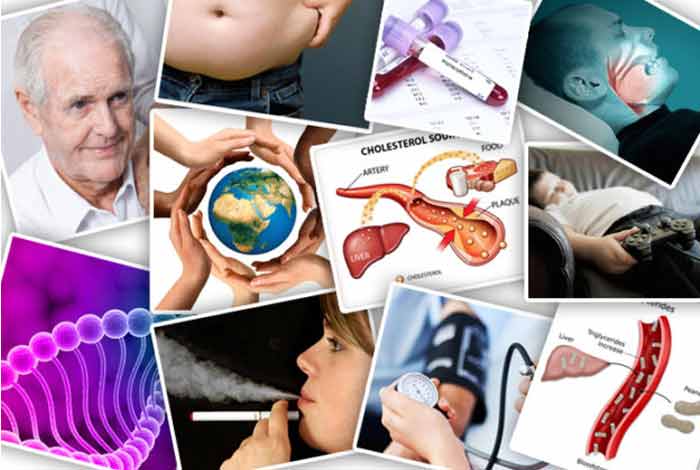
Do I have it?
There is no specific way to preempt coronary heart disease. However, if you are at risk of developing coronary heart disease, i.e. if you are overweight or obese, or have other health issues, such as high levels of bad blood cholesterol or high blood pressure, there are chances that you already have plaque deposits in your arteries. You need to see a doctor to make sure that your heart is healthy and in case there is any problem of plaque deposition you are able nip the disease in the bud before it leads to a heart attack or heart failure.
Also, one of the most common symptoms of coronary artery disease is chest pain. However, chest pain can also be a symptom of some other health conditions, such as indigestion and heartburn. Thus, it is not necessary that whenever you feel a chest pain it is the sign of coronary heart disease or heart attack. But, if a person feels pain in the middle portion or in the left side of their chest, which becomes worse with any activity it can be a possible sign of angina. Angina is a term used for chest pain caused by reduced blood flow to the heart muscle and is a symptom of coronary artery disease. If you feel that the pain in your chest is due to angina, you should visit a doctor for a proper diagnosis so that they can determine your health condition and provide treatment before the symptoms get worse.

Causes and Prevention of coronary heart diseases
One of the major causes of coronary artery disease is the damaged or injured inner walls of coronary arteries. When the inner walls of coronary arteries are damaged, it allows accumulation of plaque. Gradually the build-up of plaque leads to blockage of arteries, which affects the flow of oxygenated blood to the heart leading to coronary heart disease and heart attack.
There are various factors that cause damage to the inner walls of arteries; these are:
- Smoking
- High levels of bad cholesterol or low levels of good cholesterol
- High blood pressure
- Diabetes
- Sedentary lifestyle
The coronary artery damage can begin even during the childhood, initiating the deposition of plaque in arteries. However, the symptoms aren’t observed till the blockage starts severely affecting the flow of blood.
But, there are different ways that can help in prevention of coronary heart disease and its severe complications, such as heart attack or heart failure. The prevention lies within lifestyle changes, that promotes a healthy life.
The lifestyle changes that can be helpful in prevention of coronary heart diseases are:
- Quiting smoking
- Managing stress
- Maintaining a healthy body weight
- Doing regular exercise to keep the body physically active
- Implementing diet changes, i.e. low-fat and low-sodium diets that include fruits and vegetables
- Controlling risk factors, such as high-blood pressure, cholesterol levels, and diabetes that can possibly lead to coronary artery disease
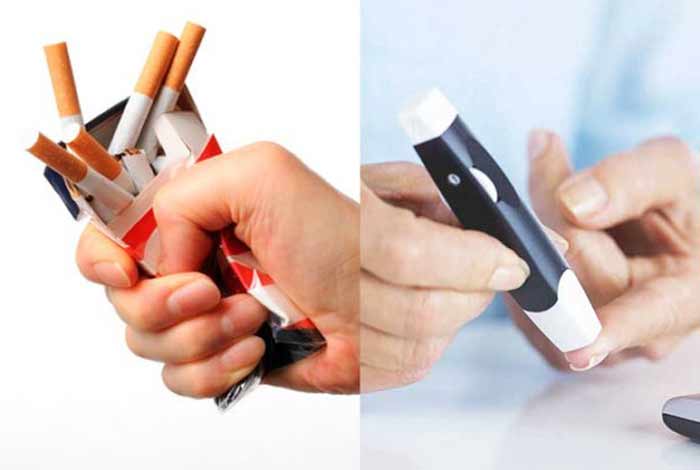
Diagnosis and Tests of Coronary Heart Disease
Coronary artery disease can be diagnosed through various methods. The diagnosis process initiates with the physical examination of the symptoms (as told by the patient) and the study of the medical history of the patient and their family followed by various tests that can help in the diagnosis of coronary artery disease such as:
- Blood Test: It is used to check the levels of blood cholesterol, both bad cholesterol (LDL) and good cholesterol (HDL). The blood test is generally performed in people who are over 40 years of age, or have a family history of cholesterol-related conditions. It is also used if a person is overweight or have some other health conditions that trigger the blood cholesterol levels.
- Electrocardiogram (ECG) test: It involves the use of electrodes that are placed on the body skin. These electrodes record the electrical signals produced by the heart because of electrophysiological pattern of heartbeats. The test can be useful to reveal any heart attack that happened in the past or a heart condition that is in progress.
- Holter monitor test: It is a type of ECG test that involves the use of a portable device known as Holter monitor. A patient needs to wear the device for 24 hours to about 2 days, by putting it inside their clothes. The device records all the electrical impulses from the heart and can help in determining its condition over a period of time and gives the overall picture of the functioning of the patient’s heart.
- Echocardiogram: It involves the use of ultrasound waves to produce inside images of heart. The images can be examined by a doctor and can be used to check whether the heart is pumping normally or not. If abnormal pumping of heart is observed, it indicates that a person is suffering from coronary heart disease.
- Stress test: It uses ECG or echocardiogram to study the activity of heart during various activities. If the symptoms of the condition trigger during exercise, the doctor might suggest riding a stationary bike or walking on a treadmill while the ECG or echocardiogram test is in progress.
This is known as exercise stress test and records the activity of heart during physical activity. However, the doctor can use medications instead of exercise machines, to observe heart stimulations. - Cardiac catheterization/Angiogram: It involves the injection of a special dye in the coronary arteries by using a long and thin, flexible tube known as catheter. The catheter is inserted into an artery in the leg or arm of a person so that the dye is carried to the coronary arteries. The dye helps the doctor to check the flow of blood in the body.
Then, an X-ray imaging is used to check for narrowed or blocked coronary arteries. Also, the narrow arteries can be treated with the help of a balloon that is pushed through the catheter and inflated to improve the flow of blood in arteries. Finally, a stent (mesh tube) is used to keep the artery dilated for improving the blood flow. - Heart scan: It is performed by using computerized tomography (CT) scan. It helps in tracing the calcium particles in fatty deposits that are the possible reason behind the narrowing and blocking of arteries. If the test shows presence of calcium particles, a person is likely to have coronary artery disease.
- Nuclear Ventriculography test: It involves the use of a radioactive substance which is injected into the patient’s body to check the condition of the heart chambers. The radioactive substance injected into the veins gets attached to red blood cells. The doctors trace the radioactive substance with the help of special monitors and scanners that can track the movement of substance in coronary arteries.
The diagnosis helps in determining the heart condition or analyzing whether a person is at risk of suffering from a heart attack in future. If diagnosed at the right time, proper treatment can be provided to the patient to avoid harmful complications, such as heart attack or heart failures in future.

Treatment and Care of Coronary Heart Disease
The treatment for coronary artery diseases lies within lifestyle changes that can help in improving the health naturally by including certain habits to daily lifestyle. These habits can certainly improve the health condition a lot and can also help in prevention from the heart condition. These habits are:
- Quit smoking
- Stress management
- Maintaining a healthy body weight
- Regular exercise
- Diet changes
If necessary, medications are also used for the treatment of coronary artery diseases. These medications are:
- Statins, Fibrates, Niacin, or bile acid sequestrants: These are cholesterol-modifying medications that can be effective in reducing the high levels of bad cholesterol. These medications eliminate the main cause of coronary heart disease, i.e. fatty deposits in arteries caused by high levels of LDL cholesterol.
- Aspirin: It is used in low-dosages and can be effective as a blood thinner and can be helpful in preventing the clotting of blood inside the arteries, thus eliminating the obstructions in the flow of blood, helping in the treatment coronary artery disease.
It can also be helpful in preventing a person from future heart attacks. However, it can be inappropriate if the dosages are high or a person is using some other blood thinner. Thus, the advice of a medical professional is sought before using aspirin for coronary heart disease. - Beta-Blockers: These are effective in reducing the blood pressure and slow down the heart rate, thus reducing the demand of oxygen. These medications are effective in reducing the risk of future heart attacks, if a person has already suffered a heart attack in past.
- Nitroglycerin: It comes in the form of tablets, sprays, or patches can be effective in reducing chest pain caused by coronary artery disease. It temporary dilates the coronary arteries of a person and reduces the heart’s demand for the supply of blood.
- Angiotensin-converting enzyme (ACE) inhibitors: These are effective in reducing the blood pressure and slows down the progression of coronary heart diseases. Also, a similar drug called angiotensin II receptor blockers (ARBs) can also be used in place of ACE inhibitors.
- Calcium channel blocker: It can dilate the coronary arteries, allowing the flow of blood to the heart, and reduces hypertension.
Besides medication, surgery can also be used for treating coronary artery disease. The process involves dilation of blocked arteries or replacing them to maintain the flow of blood to heart. There are various surgical methods that can be used for the treatment of coronary artery disease; these are:
- Angioplasty: It is also known as balloon angioplasty, coronary artery balloon dilation, or percutaneous coronary interventions (PCI), which involves the use of deflated balloon that is threaded to coronary arteries with the help of a thin, long tube. The balloon is later inflated inside the arteries to open the blocked arteries. A stent is also used to keep the dilated arteries open. The process isn’t very invasive as no part of body is cut open for the treatment.
- Stent placement: It is used along with balloon angioplasty to keep the dilated arteries open and the improve the flow of blood. A wired mesh tube known as stent is inserted inside the dilated arteries which permanently stays there. However, when the stent is blocked by plaque, blocking the arteries again, it is known as restenosis. There are many treatment options for patients who have restenosis after receiving a stent such as catheterization
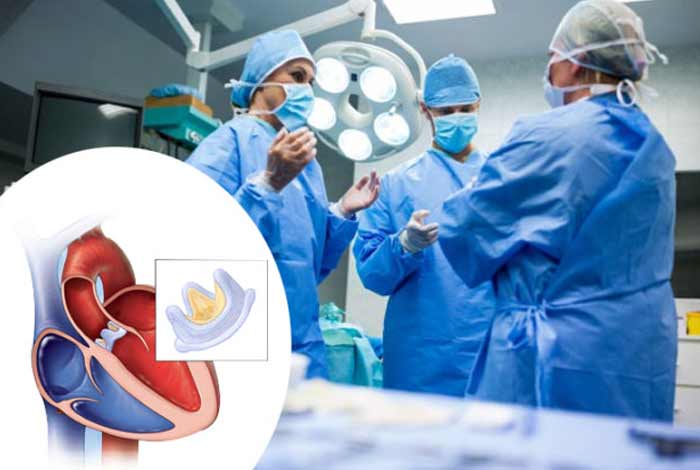
- Laser Angioplasty: It is similar to balloon angioplasty, however, instead of a balloon, a laser is connected to the catheter to remove the blockages in arteries.
- Heart valve replacement surgery: It involves the replacement of infected and abnormal heart valves with artificial heart valves, to improve the function of these valves.
- Atherectomy: It is a process similar to angioplasty. In this process, a balloon along with a small rotating shaver is attached to catheter. The shaver cuts off the plaque deposited in the arteries to improve the flow of blood, thus helping in the treatment of coronary artery disease.
- Bypass surgery: It is also known as coronary artery bypass graft (CABG) and involves the use of arteries from other parts of body (known as grafts), to restore the flow of blood to the heart. This can be helpful in treating the coronary arteries clogged by plaque. A patient might need to go through more than one bypass surgeries, depending on the number of clogged arteries. However, it is an open-heart surgery process and is used when more than one coronary arteries are blocked.
- Cardiomyoplasty: This procedure can be effective in improving the pumping of heart. The process involves the use of skeletal muscles taken from the back or abdomen of the patient. The muscles are later attached to the weakened heart. Also, a device similar to pacemaker is used to stimulate the pumping of heart. The contraction of heart with muscles along with pumping stimulation device is effective in improving the pumping of heart.
- Heart Transplant: It involves the replacement of a diseased heart with a healthy human heart. The heart transplant treatment is used cases where the heart is damaged beyond repair.
Besides all these medication and surgical methods, doctors are still working to innovate new methods for the treatment of coronary artery diseases. Some of the new methods that are used by doctors for the treatment of coronary heart diseases include:
- Angiogenesis: It involves the use of stem cells or some other genetic material that is given to patients through their veins, or directly injected to the damaged heart tissue. This can be helpful in promoting the growth of new blood vessels that can go around the clogged ones, thus improving the flow of blood.
- Enhanced External Counterpulsation (EEC): This procedure involves the use of cuffs that are put on the legs of the patient and inflate-deflate and helps in improving the supply of blood to the coronary arteries. This treatment process is generally used when patients are suffering from chronic angina and medications are ineffective, and they don’t qualify for surgical treatment.
Besides the treatment, if a coronary artery disease patient has suffered from a heart attack in past, it is required to treat them with care to avoid future heart attacks. It is necessary to keep them away from stress as it can possibly trigger the symptoms of coronary heart disease and cause angina or a heart attack.
Also, it is necessary to provide immediate treatment to a patient when they have a sudden heart attack. If symptoms, such as intense pain in chest, especially in the middle or the left portion, shortness of breath, and excessive sweating are observed in a person, it indicates that they might be having a heart attack and requires instant medical help. It is advised to call for an ambulance as soon as possible so that the patient can be provided with medical attention.

OTC Medications and Self-Management Methods for Coronary Heart Disease
There is no certain OTC medication that can be used for the treatment of coronary artery disease. However, if a person is suffering from a sudden heart attack, OTC Aspirin can be used to stop the clotting of blood inside the arteries.
But, intake of any OTC medication and even Aspirin is advised only in the presence of a paramedic as there are chances that the patient is already taking some other blood thinner, and Aspirin might complicate the condition and the symptoms.
Besides the OTC medication, the doctor must’ve prescribed nitroglycerin medications that can be used to reduce the chest pain, if a person has suffered from a heart attack before. However, if the pain remains constant even after taking two dosages of nitroglycerin (both after a 5-minute gap) it is advised to call for medical help.
Also, if a person is living with coronary artery disease, he or she should stay away from external stress and learn how to manage stress so that he or she can avoid triggering of the symptoms of the condition, as these might lead to another heart attack. Moreover, maintaining a healthy diet is also necessary for a person living with coronary artery disease.
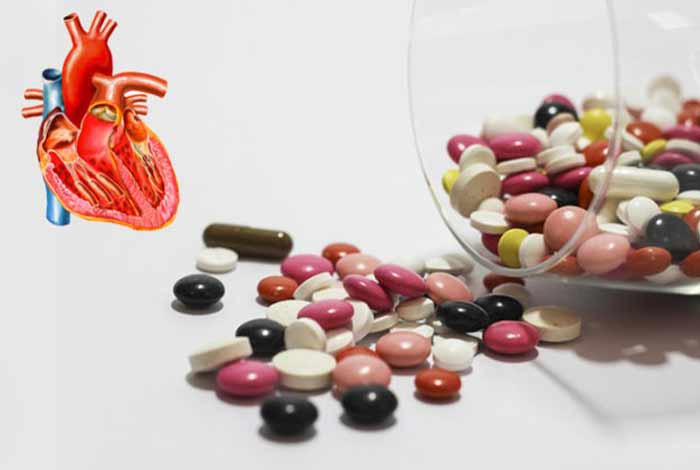
Natural Treatment of Coronary Heart Disease
Generally, the natural treatment of coronary artery disease lies within maintaining a healthy lifestyle by doing regular exercise and maintaining the levels of blood cholesterol and blood pressure. Also, giving up the bad habits, such as smoking, can also help in improving the life of a person with coronary heart disease.
However, the natural treatment of the condition lies within diet. A few diet changes can help in reducing the inflammation that causes heart problem. Foods, such as soybean or corn oil, pasteurized dairy products, trans fats, refined carbohydrates, etc. can affect the levels of cholesterol in blood and can lead to inflammation and heart diseases such as coronary artery diseases.
But, there are various food that can help in reducing the inflammation and can also help in the natural treatment of coronary artery diseases; these include, foods rich in antioxidants and fibers; various fruits and vegetables; herbs and spices, such as turmeric, ginger, and garlic; beans and legumes; healthy fats from nuts, seeds, coconut, or olive oil; raw dairy products, i.e. unprocessed dairy products freshly taken from farm and red wine.

Health Tip by Experts
Coronary artery disease develops over time and there is no certain way to preempt a heart attack caused by clogging of coronary arteries. However, it is possible to prevent a coronary artery disease. The prevention lies within maintaining a healthy lifestyle and giving up bad habits. Also, including a workout routine in everyday schedule while following a healthy nutrition-rich diet can help in prevention from a coronary heart disease.
Also, if a person is already suffering from coronary artery disease, there is still hope as it is never too late to initiate a healthy lifestyle. Life with coronary artery disease is still possible.
